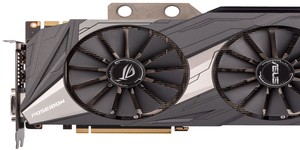
Power Consumption (Idle and Gaming)
In order to get an idea of a GPU's power draw, we loop the Unigine Valley 1.0 benchmark (2,560 x 1,400, 'Ultra' detail, no anti-aliasing), which is a very GPU-limited test. We use a watt meter to measure the maximum total system power draw during the test, and also take an idle reading at the Windows desktop (3,840 x 2,160).Thermal Performance (Idle and Gaming)
Thermal output is also measured using Unigine's Valley 1.0 benchmark. The GPU is installed in a closed, but fairly well ventilated case (Corsair Graphite 760T) with HDD cages removed and the case fans at full speed. We leave all GPU fan profiles and settings as they come and leave the benchmark running for ten minutes so that temperatures plateau. We record the peak GPU temperature using GPU-Z, and present the data as the delta T (the difference between the GPU temperature and the ambient temperature in our labs). We also take an idle reading at the Windows desktop (3,840 x 2,160).
MSI MPG Velox 100R Chassis Review
October 14 2021 | 15:04








Want to comment? Please log in.